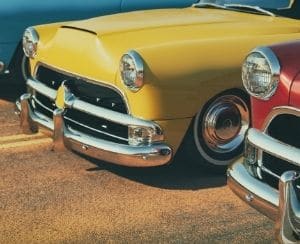
Aging gracefully is the goal of many middle-aged Americans entering into a new stage of life. While widely feared, aging imparts wisdom that you can pass from generation to generation. It relieves you of your daily work responsibilities, allowing you to settle into retirement. Despite its benefits, unfortunately, it isn’t uncommon for people to develop mobility issues as they get older.
Many factors can contribute to mobility woes in elderly folks, making it difficult to pinpoint the cause of declining stability or increasing bodily fatigue. Arthritis is just one of many possible culprits. Thankfully, you aren’t doomed to a life of mobility restrictions. There are options available for seniors who want to improve their mobility and reclaim their independence.
If you or a loved one suffers from limited mobility, be sure to review this list in-depth. Otherwise, you may have to hire a full-time caretaker who can retrieve faraway items, complete daily tasks, and help you move from room to room.
Try an upright walker
Purchasing an upright walker from a reputable brand like The Perfect Walker can be a life-changing step in restoring your or your loved one’s sense of independence. Upright walkers can be a game-changer for senior citizens who live on their own that want to move from point A to point B with ease. Additionally, using an upright walker can make it easy for elderly folks to migrate from their kitchens to their family rooms and vice versa. This specific mobility aid can also save you or a grandparent a significant amount of time, formerly spent shuffling between rooms.
When debating between mobility aids on the market, you may be curious about the other incentives of purchasing an upright walker. Along with its ability to reinstate a senior citizen with their physical freedom, it can potentially keep all kinds of slips, falls, and injuries at bay. If your parent or grandparent is currently living on your own, you’ll want a mobility aid guaranteed to prevent life-threatening fall-related injuries.
Enroll in physical-fitness classes designed for senior citizens
Despite popular misconceptions, you don’t have to panic if you’re a senior citizen who hates falling behind the younger folks and scrambling to keep up. If you or an elderly loved one is interested in maintaining a physically-active lifestyle, there are fitness-center classes available through your gym membership.
Because elderly folks are prone to injuries and are likely suffering from chronic conditions and mobility impairments, exercise trainers have designed various exercise courses exclusively for the older crowd. If you or your elderly grandparent participates in stretches and exercises geared solely toward senior citizens, you may be able to enhance your mobility or their mobility in no time.
With a quick online search, you can learn about gyms in your area with fitness courses tailored to senior citizens’ needs and mobility restrictions. Unlike other more rigorous exercise classes, exercise trainers won’t try to push a senior citizen’s limits, as this strategy can severely injure a participant.
Opt for physical therapy sessions
It isn’t uncommon for senior citizens who are frail and suffer from mobility impairments to experience injuries. Unfortunately, these elderly folks are most susceptible to strains or broken bones. Sometimes, they pull their muscles, as well.
It doesn’t matter what kind of injury you’ve sustained as a senior citizen with mobility limitations. All injuries, from sprains to breaks, require medical attention. If you suspect an injury, you’ll need to set up an appointment with a qualified and well-reviewed physical therapist. Following your first session, your physical therapist will schedule regular sessions to expedite recovery.
Physical therapy can bring a plethora of benefits to the table for patients of all ages, specifically senior citizens. This form of treatment can help people bounce back after sustaining severe injuries of all kinds. If you want your body to heal quickly and successfully, visiting a physical therapist can go a long way. Physical therapy sessions can prevent seniors from aggravating existing injuries with sudden movements and strenuous activities.
Rely on a mobility chair any time you’re out in public
A mobility chair can work like a charm for senior citizens who aren’t willing to give up their active lifestyles. If you’re a senior citizen who’s always on-the-go, it may be in your best interest to invest in a handy mobility chair. Mobility chairs aren’t wheelchairs at all. They’re portable devices that are easy-to-operate and don’t require any physical exertion. Senior citizens can bring them along to all sorts of locations stress-free.
Unlike with other mobility aids, you won’t have to worry about coordinating breaks for rest. With a mobility chair, you can keep up with your non-disabled friends and family and enjoy hours of fun.
Make a change in your footwear selection.
Senior citizens who wish to improve mobility may benefit from changing up their footwear options. Suppose you identify as an elderly individual who wants to move about freely and maintain a sense of independence. In that case, you should seriously consider purchasing brand-new shoes.
It can be a fantastic idea to opt for shoes equipped with a considerable amount of cushioning. In many cases, sufficient padding can keep frustrating, painful, and unpleasant foot injuries and pain episodes at bay. If you’re looking for additional support or can’t afford a brand-new pair of arch-supporting sneakers, it may be wise to slip orthotic inserts into your existing pairs of shoes. If a new shoe collection is in the budget, it’s vital to zero in on shoes that have proper support during your shopping experience.
If you have any concerns about your shoe choices as a senior citizen, you should take the time to consult with your doctor who’s knowledgeable about proper foot care.
In summary
Don’t accept a sedentary lifestyle as your new norm. With the right mobility aid, exercise routine, and medical care, you or a loved one can squeeze every moment of fun out of their remaining years.









